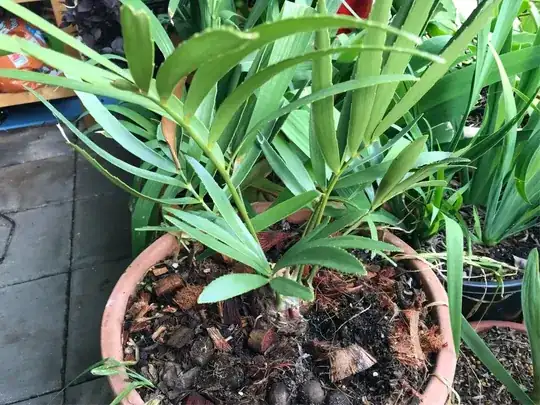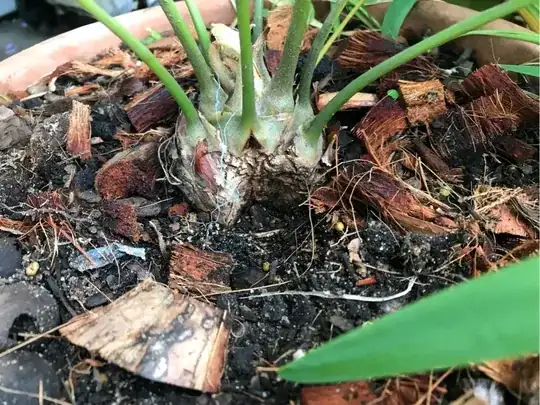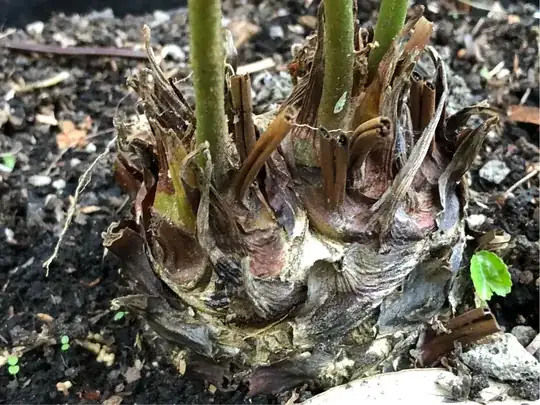Advice please on what may have caused this large chunk to be taken from my specimen of Zamia fischeri?
Background
The plant was purchased about six months ago and I recently (three or four weeks ago) repotted it into the current, larger pot. It has settled in well and has begun to produce new leaves from its crown.
Problem
Only today did I notice the large chunk from its caudex.
It’s baffling me, as I am usually quite attentive and would expect to notice this when repotting the plant.
It appears to have “healed” over, so there is no raw or new damage.
Suggestions
Maybe:
- as a younger plant, it was grown alongside a post or some other round object;
- something has taken a big bite out of the side of the plant (we do have a local bandicoot with a large appetite);
- The plant has some form of disease in the caudex.
Research to Date
I have read these articles on the internet:
- My Cycad or Sago Palm Is In Trouble! - Sago Palm & Cycad Care by Jesse & Phil Bergman;
- Gardening With Cycads, Royal Botanic Gardens Sydney.
Any thoughts or advice greatly appreciated.



